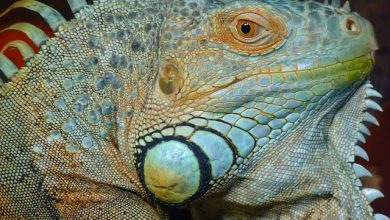How to Keep Your Exotic Pet Happy: Amphibian Edition

Last week I talked about how to provide enrichment for reptiles. But reptiles arenât the only exotic pets. Amphibians also benefit from mental stimulation and an interesting environment.
So this week, Iâm talking about how to provide enrichment for frogs, toads, newts, and axolotls.
Change up their food
A lot of pet keepers get into the habit of feeding their frog or toad the same thing all the time. And that may be easy for you, but itâs not as good for your exotic pet. Amphibians benefit from variety in their diet, and not just because of the additional nutrients theyâll get.
Having different foods also provides different experiences for them. Think about how you feel if you get the same sandwich every day. It probably tastes fine. But after a while, youâre likely to start wishing you occasionally got to eat something else.
Even just changing from crickets to mealworms can provide enrichment for your pet. For axolotls, you can feed bloodworms or brine shrimp, or even regular old nightcrawlers.
Allow for some natural food hunting
Many keepers tong-feed their frogs and toads, and thatâs fine. Itâs a safe way to feed, especially if you have multiple individuals that may fight over food. That being said, occasionally allowing for hunting gives your amphibian exercise and a bit of fun. Most things that replicate their lives in nature are good for enrichment.
Live Vita-Bugs are a type of cricket you can order from The Tye-Dyed Iguana thatâs guaranteed to have more nutrition than standard commercially-raised crickets.
You can also use a mealworm feeder to slowly drop a few worms at a time for your frog to catch.
You can alternate between hunting and tong-feeding so that you ensure every animal in your habitat gets enough food, and one isnât hogging everything.
Provide more hides and surfaces
Although it may not seem like hiding under a rock most of the day is very interesting, itâs exactly what many amphibians need. Having plants (live or fake), cork bark, or various decorative hides helps them to feel safe. It also provides a place to run back to after exploring.
Providing multiple types of hides gives them variety and allows them to explore different sights, smells, and textures.
For frogs, having ledges or branches at a few different height levels is also important. They donât need their entire habitat on one level, and building vertically creates more areas for them to explore.
You can find a lot of fun accessories that work as hides or climbing ledges, like this canopy cave.
Consider a bioactive setup
Believe it or not, a bioactive terrarium can actually provide the majority of things your amphibian needs to stay happy and healthy.
- The microfauna in a bioactive terrarium, such as springtails and isopods, can be supplemental nutrition for many frogs and toads and provide hunting activity. Most of these are harmless to your pet and can stay in the tank even when the animal is not actively hunting.
- Live plants in a bioactive setup provide additional places for your frog, toad, or newt to hide and climb.
And what about axolotls? You can create a similar naturalistic environment for them in the aquarium. By selecting the right substrate and placing live plants, your axolotl gets a lot of similar benefits to a bioactive terrarium.
Although microfauna canât really live in aquatic environments, you can utilize other species to provide a clean and balanced habitat for your axolotl. For instance, snails and shrimps help to keep an aquarium clean.
Feel free to share your amphibian enrichment ideas with The Tye-Dyed Iguana on Facebook!



